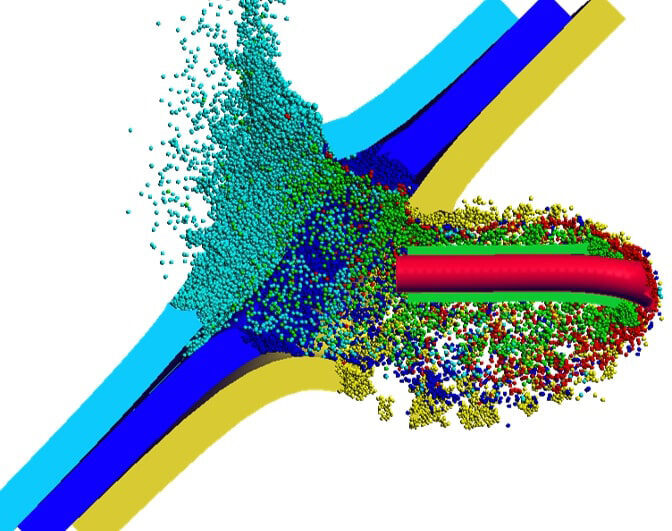DEFENSE
SwRI updates impact modeling software EPIC for the US Army Corps of Engineers to meet the evolving computational needs of the US Department of Defense

Southwest Research Institute (SwRI) has received a grant of $500,000 in the first year, which can be further extended up to $3.5 million for the development of the Elastic-Plastic Impact Computations (EPIC) dynamic finite-element code. EPIC uses particle and finite element methods to simulate complex impact and explosion scenarios, enabling engineers to analyze how a particular design would behave under stress in real-world conditions. It can accurately simulate high-velocity impact events and explosive detonations, providing cost-effective design solutions for effective warheads, armor, vehicles, aircraft, and soldiers. EPIC's simulations can also offer protection against a wide range of threats.
SwRI Staff Engineer Dr. Stephen Beissel, who has been involved in the development of the EPIC project since the mid-1990s, stated that EPIC leverages finite element and particle methods to simulate complex impact and explosion scenarios. The numerical algorithms and material models enable the code to handle highly dynamic and energetic events, allowing engineers to analyze how a particular design for a ground vehicle, ship, or aircraft component would react under stress in real-world conditions.
The EPIC code was initially developed in the 1970s to cost-effectively design warheads, body armor, and armored vehicles, and model their interactions. In 2007, the EPIC development team joined SwRI, which opened an office in Minneapolis, Minnesota, to support them. SwRI took over the maintenance and development of the project at that time.
EPIC uses finite element analysis, an efficient computational technique, to model a full range of impact scenarios, including high-speed impacts that generate large pressures, high strain rates, and permanent deformations in solid materials. It also uses particle methods, an approach similar to the finite-element method, which continuously reassesses the local regions over which information is exchanged.
EPIC's unique feature is the accurate transition from finite elements to particle methods when deformations become extensive. It is a crucial tool for designing effective warheads, and armor for vehicles, aircraft, and soldiers, and to protect against a wide range of threats. It simulates high-velocity impact events and explosive detonation in the case of warheads.
Over the next four years, SwRI aims to improve and update EPIC by increasing its accuracy, expanding the types of problems and scenarios it can handle, and increasing its computational efficiency on supercomputers built with GPUs.
Dr. Beissel noted that as adversaries continue to develop new munitions, such as hypersonic missiles, tools like EPIC become critical to designing new armor and approaches to defeating these threats. Creating physical prototypes and testing them is expensive and time-consuming, especially in destructive events. Simulating these dynamic and explosive large-strain events, instead of repeatedly recreating a physical prototype, makes the design cycle more efficient and cost-effective.

